Flora
The plant world of Costa Rica is very extensive and varied. There are more than 12,000 different plant species and probably many unknown species grow in remote areas. It is remarkable that no less than 1200 species of orchids grow here. Climate, soil conditions and altitude are responsible for the great diversity. The national flower of Costa Rica is an orchid: the deep pink Guaria Morada.
 Old billet with an image of the Guaria Morada
Old billet with an image of the Guaria Morada
The vegetation ranges from tropical rainforest in the eastern plains to dry steppes in Guanacaste. The area of rainforest has been drastically reduced in recent decades and is now only fragmented, especially in the mountain areas of the Cordillera de Talamanca, on the Osa Peninsula and some parts of the Cordillera Central. The tropical rainforest is dominated by forest giants that can grow up to 60 meters high. Because the bright sun constantly shines on the crowns of these trees, a desert climate prevails in the tops of the trees. The trees have adapted to this situation through small, thick, leathery leaves. Lower vegetation is not much in the rainforest due to the lack of sun. Some common species that still grow here are arums and clubmosses.
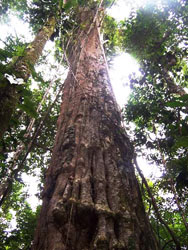 tropical almond tree
tropical almond tree 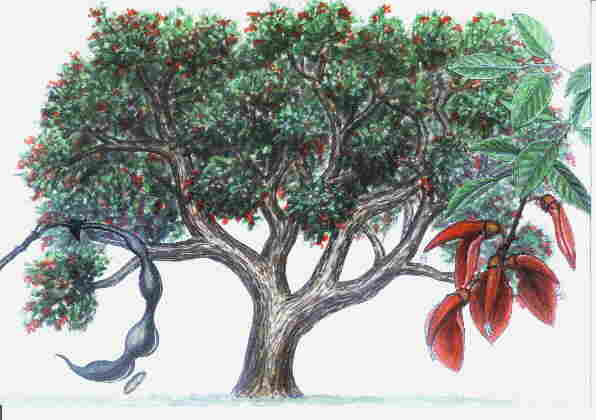 ceibo
ceibo
The green-winged macaw feeds on the fruits of the almond tree. Because of the quality of the wood, many almond trees were cut down in the past and the green macaw was in danger of dying out. To prevent this, almond trees are being planted again in many places. The number of green-winged macaws has increased again in recent years.
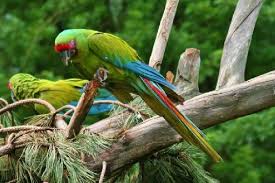
The cloud forest thrives on the slopes of the Cordilleras, where the warm rising air from the Caribbean plains condenses. Due to the very high humidity in these cloud forests, the plant growth is very exuberant and varied. The trees of the cloud forest are somewhat smaller than those of the rainforest and the vegetation on the ground is very dense. A typical tree for the cloud forest is the copal with its peculiar shapes. Remarkable here are the ferns and lichens and beard mosses (epiphytes) that grow on the trees, including the well-known bromeliad, the 'matapalos' or tree stranglers (eg Ficus Benjamina) and lianas. A notable ground plant species is the Gunnera insignis or 'sombrilla de pobre' ('umbrella of the poor') with huge leaves. The Parque Nacional Braulio Carillo is Costa Rica's most extensive cloud forest;
 Sombrilla de pobre
Sombrilla de pobre  Copal tree
Copal tree
In the relatively dry northwest of Costa Rica, the so-called 'sabana' vegetation, consisting of grasses, shrubs and rain-green forests with trees that generally do not exceed 15 meters in height, including calabash and thorn acacia, predominates. These deciduous trees lose their leaves in the dry season. But the rain-green forests are also under heavy pressure; many forests have been cleared to make way for livestock farms. They are almost exclusively found on the Pacific coastline and in Costa Rica these forests can only be found in the national parks of Guanacaste and here and there on the Nicoya Peninsula. Columnar cacti also thrive in this environment. A characteristic tree in this area is the unmistakable Guanacaste, a low tree with a spreading crown and bearing huge ear-shaped fruits. Another special tree species in the province of Guanacaste is the 'palo verde', the green tree, family of the mimosa, never higher than nine meters and recognizable in the flowering period by its clusters of yellow flowers. Other notable plants include the calabash tree and the American balsam tree, recognizable by its reddish-brown, paper-thin bark and aromatic resin.
 Guanacasta tree
Guanacasta tree 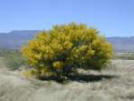 Palo Verde
Palo Verde
The Guanacasta tree is the national tree of Costa Rica
Above the tree line, from about 2800 meters, there is hardly any vegetation, except for some low shrubs, mosses and grasses. This vegetation can be found on the Cerro de la Muerte, the Cerro Chirripó and the volcano Irazú, among others.
In the tropical forest of the central coast, including Manuel Antonio, the 'manzanillo de playa' grows, the fruits of which, but especially the branches and leaves, contain a poisonous liquid.
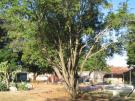 Manzanillo
Manzanillo
La Amistad National Park covers a significant portion of the Cordillera de Talamanca. In total, this cross-border nature reserve covers 400,000 hectares; slightly less than half is on Costa Rican soil. The area has different climatic zones, each with its own animal and plant world. Many of the more than 10,000 plant species that scientists have mapped are found nowhere else in the world. The same applies to a number of animal species. In 1983, UNESCO placed La Amistad on the World Heritage List.
La Amistad, together with the national parks Chirripó and Cahuita, with a number of protected forest areas, animal reserves and buffer zones, form the Area de Conservación La Amistad.
The Reserva Biológica Lomas Barbudal is a small reserve, yet there are several plants that are rare in the rest of the country, including mahogany, Panama redwood, gonzalo alves, cortez amarillo and rosewood.
 Rosewood
Rosewood 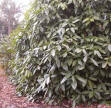 Broodboom
Broodboom
A tree that is common on the Caribbean coast is the breadfruit tree, a descendant of the Southeast Asian breadfruit tree. The 20-meter-tall, evergreen tree has dark green, glossy leaves that can grow up to a meter long.


